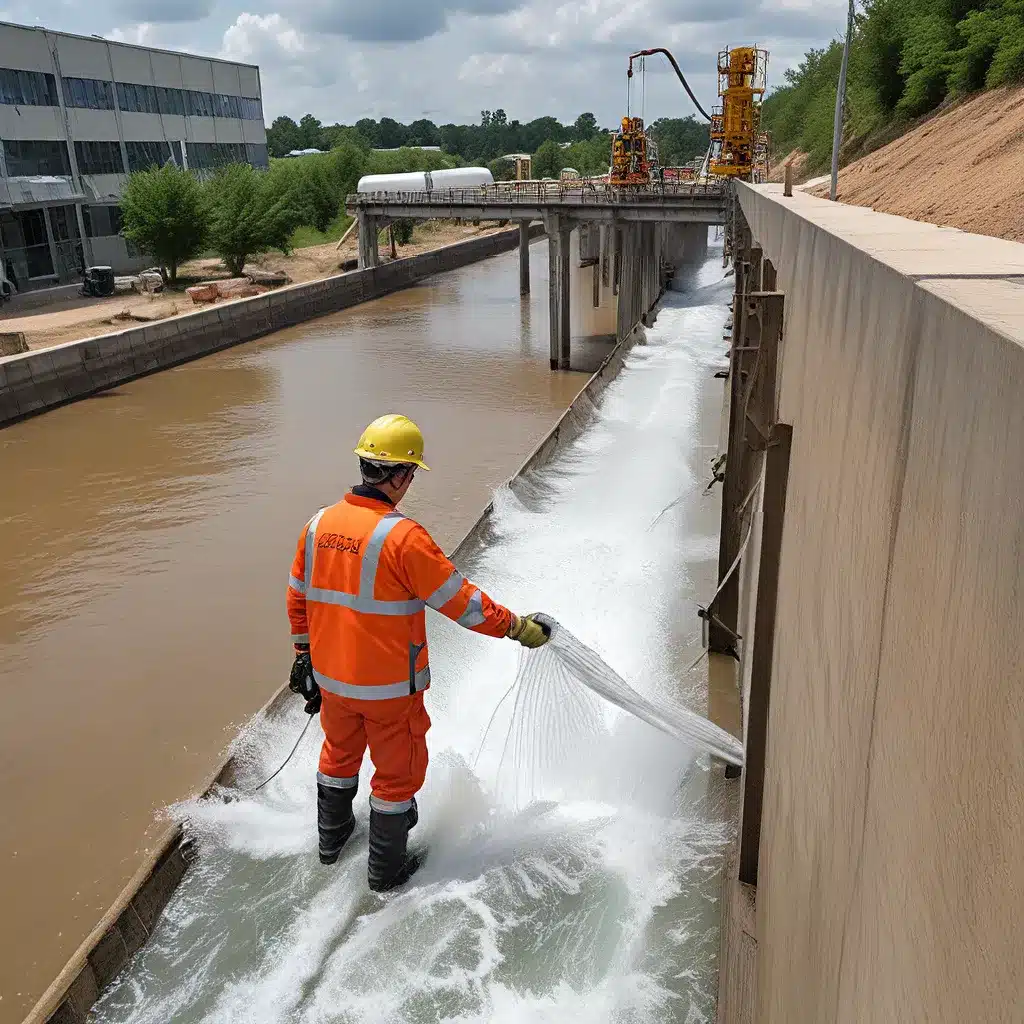
In the rapidly evolving world of water treatment and environmental services, the pressure to ensure the safety and security of our most precious resource has never been more pronounced. As we navigate the complexities of emerging technologies, it’s crucial that we not only understand their potential but also harness them to elevate the safety standards in the water sector.
Embracing the Digital Transformation
The water industry has long been considered a bastion of tradition, but the tides are turning. The digital transformation sweeping through various sectors has now reached our doorstep, and it’s up to us to embrace the opportunities it presents.
One of the most significant advancements in this space is the proliferation of the Internet of Things (IoT). By equipping water treatment facilities with a network of interconnected sensors and devices, we can gather a wealth of real-time data that was previously inaccessible. This data, when properly analyzed, can provide invaluable insights into the operational efficiency, asset performance, and, most importantly, the safety and security of our water systems.
Leveraging Data Analytics
But data is only as powerful as our ability to interpret it. That’s where data analytics comes into play. By harnessing the power of advanced algorithms and machine learning, we can sift through the vast troves of information and uncover patterns, anomalies, and potential threats that would have gone unnoticed in the past.
Imagine a scenario where a sensor detects a sudden spike in chlorine levels at a water treatment plant. In the past, this might have gone unnoticed until a more serious issue arose. But with data analytics, the system can instantly flag the anomaly, triggering immediate investigation and remediation. This not only enhances the safety of the water supply but also helps prevent costly and potentially devastating incidents.
Embracing Automation and Robotics
Another area where emerging technologies are transforming the water sector is in the realm of automation and robotics. Robotic process automation (RPA) and autonomous systems are becoming increasingly prevalent, taking on tasks that were once the domain of human workers.
Consider the routine inspection and maintenance of water infrastructure. Rather than relying on manual, time-consuming, and potentially hazardous tasks, we can deploy specialized robots and drones to assess the condition of pipes, tanks, and other critical components. These automated systems can navigate tight spaces, detect leaks, and even perform minor repairs, all while minimizing the risk to human workers.
Cybersecurity: The New Frontier
As we delve deeper into the digital realm, the issue of cybersecurity has taken on a newfound urgency. The water sector, like many other critical infrastructure domains, has become a prime target for malicious actors. Cyberattacks on water treatment plants, for instance, can have devastating consequences, potentially disrupting the flow of clean water and exposing communities to health and environmental risks.
To combat this growing threat, water utilities must adopt a multilayered approach to cybersecurity. This includes implementing robust access controls, regular software updates, and comprehensive incident response plans. But it also requires a deeper understanding of the evolving cyber landscape and the innovative tools and techniques that can be leveraged to stay one step ahead of the attackers.
Fostering Collaboration and Knowledge Sharing
Elevating the safety and security of the water sector is not a solo endeavor. It requires a collaborative effort involving industry experts, policymakers, and technology innovators. By fostering open lines of communication and knowledge sharing, we can learn from each other’s successes and failures, and build a more resilient and proactive water management ecosystem.
Emerging technologies like artificial intelligence (AI) and natural language processing (NLP) can play a vital role in this collaborative effort. These tools can help us identify and share best practices, track industry trends, and stay informed on the latest advancements and threats.
Empowering the Workforce
As we embrace these technological advancements, it’s essential that we don’t lose sight of the human element. The water sector workforce, the backbone of our water infrastructure, must be equipped with the skills and knowledge to navigate this rapidly evolving landscape.
Upskilling and reskilling initiatives can help bridge the gap, ensuring that our employees are empowered to leverage these emerging technologies effectively. By fostering a culture of continuous learning and innovation, we can create a more resilient and adaptable workforce, capable of meeting the challenges of the future.
Embracing the Future, Safeguarding the Present
As we gaze into the future of the water sector, it’s clear that the path forward is paved with both opportunities and challenges. By embracing the power of emerging technologies and fostering a culture of collaboration and continuous improvement, we can elevate the safety and security of our water systems, ensuring that future generations have access to the clean, reliable water they deserve.
At Inland Waters Inc., we are committed to leading the way in this digital transformation. By leveraging the latest advancements in data analytics, automation, and cybersecurity, we are redefining the standards of water sector safety and ensuring that our communities can trust in the resilience of their water infrastructure.
The future is ours to shape, and the time to act is now. Let’s embark on this journey together, and unlock the full potential of emerging technologies in elevating the safety and security of the water sector.


